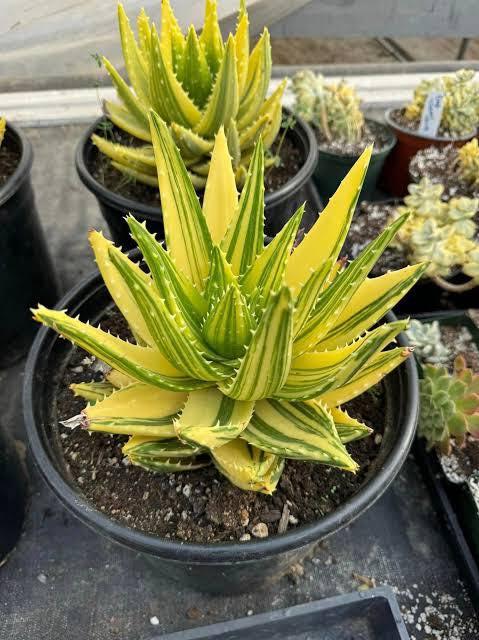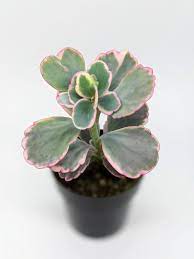Ruby Necklace💜 Othonna capensis**
The Ruby Necklace, also known as *Othonna capensis*, is a striking trailing succulent known for its vibrant ruby-red stems and tiny, glossy leaves that resemble tiny beads or turtle shells. It’s a showstopper in hanging baskets, windowsills, and shelf arrangements, delivering a lively splash of color and effortless charm. Loved by collectors and casual plant parents alike, the Ruby Necklace offers both beauty and low-maintenance care, making it one of the most desirable indoor trailing succulents available.
—
#### 🌿 **Care & Growth Habit**
This succulent grows as a trailing vine with slender, flexible stems that can reach over 1–2 feet in length. The leaves are small, oval-shaped, and may shift in color between green and purple depending on sunlight. Known for its rapid growth, this plant fills containers and baskets with lush, cascading foliage in just a few months.
It can even bloom delicate daisy-like yellow flowers in favorable light, adding an extra pop to its already dramatic appearance.
—
#### 💧 **Watering**
– Water thoroughly when the soil is dry.
– Always use containers with drainage to prevent root rot.
– During the growing season (spring/summer), water once every 10–14 days.
– In cooler months, reduce watering to once every 3–4 weeks.
– Avoid letting water sit on the stems or leaves to prevent rot and fungal issues.
—
#### ☀️ **Light & Temperature**
– Best suited for bright indirect light or partial sun.
– Direct morning light brings out the ruby coloration; too much harsh sun may scorch the leaves.
– Ideal temperatures range from 18°C to 27°C (65°F to 80°F).
– Not frost-hardy—move indoors when temperatures drop below 10°C (50°F).
—
#### 🌱 **Soil & Potting**
– Use well-draining succulent mix.
– Add perlite for increased drainage if needed.
– Hanging baskets, shallow pots, or wall planters work beautifully.
– Repot every 1–2 years to refresh soil and manage root space.
—
#### 🌸 **Fertilizer**
– Feed monthly during the growing season with a diluted liquid fertilizer.
– Skip fertilizing during dormant winter months.
– Avoid overfeeding—this can lead to excessive leggy growth.
—
#### 🐾 **Pet Safety**
Ruby Necklace is considered non-toxic to pets, but ingestion is not advised. Always monitor curious cats or dogs around trailing plants.
—
#### 🎨 **Styling & Display Ideas**
– Use in hanging planters to highlight its cascading stems.
– Combine with contrasting succulents like Crassula or Echeveria for color diversity.
– Ideal for vertical gardens and succulent walls.
– Display on floating shelves where its trailing vines can shine.
—
Let’s roll right into the next product:
—
### 🌞 **Aloe nobilis – Golden-Toothed Aloe**
Aloe nobilis, often called Golden-Toothed Aloe, is a robust and decorative aloe variety famous for its spiky rosette structure and golden-edged leaves. Unlike some aloes that remain soft-edged, this one boasts distinctive teeth that give it visual edge and texture—making it perfect for ornamental pots, desert landscapes, and drought-tolerant containers.
—
#### 🌿 **Growth & Features**
This aloe grows in a tight rosette with fleshy, lance-shaped leaves that arch outward. Leaf margins feature soft golden spines, and mature plants can reach up to 12–18 inches wide and tall. It produces tall flower spikes with orange or coral blooms in summer, attracting pollinators like hummingbirds.
—
#### 💧 **Watering**
– Water deeply but infrequently—roughly every 2–3 weeks.
– Ensure complete drying between waterings.
– Reduce watering in cooler seasons to prevent rot.
—
#### ☀️ **Light & Temperature**
– Prefers full sun to partial shade.
– Best in southern or western exposures if indoors.
– Ideal temperature: 20°C to 29°C (68°F to 85°F).
– Tolerates mild frost but benefits from protection in freezing temperatures.
—
#### 🌱 **Soil & Potting**
– Well-draining succulent or cactus mix is essential.
– Terra cotta pots with drainage holes are ideal for outdoor displays.
– Repot every 2–3 years or when overcrowded.
—
#### 🌸 **Fertilizer**
– Apply diluted succulent fertilizer once a month in spring/summer.
– No feeding needed in fall or winter months.
—
#### 🐾 **Safety Note**
Like other Aloes, this plant may be mildly toxic if ingested by pets or children. Handle with care and place out of reach.
—
#### 🎨 **Styling Tips**
– Use as a bold statement piece on balconies or patios.
– Ideal for geometric arrangements and rocky gardens.
– Pairs well with other spiky succulents for a dramatic contrast.
– Place near pathways for visual flair with minimal upkeep.





Reviews
There are no reviews yet.